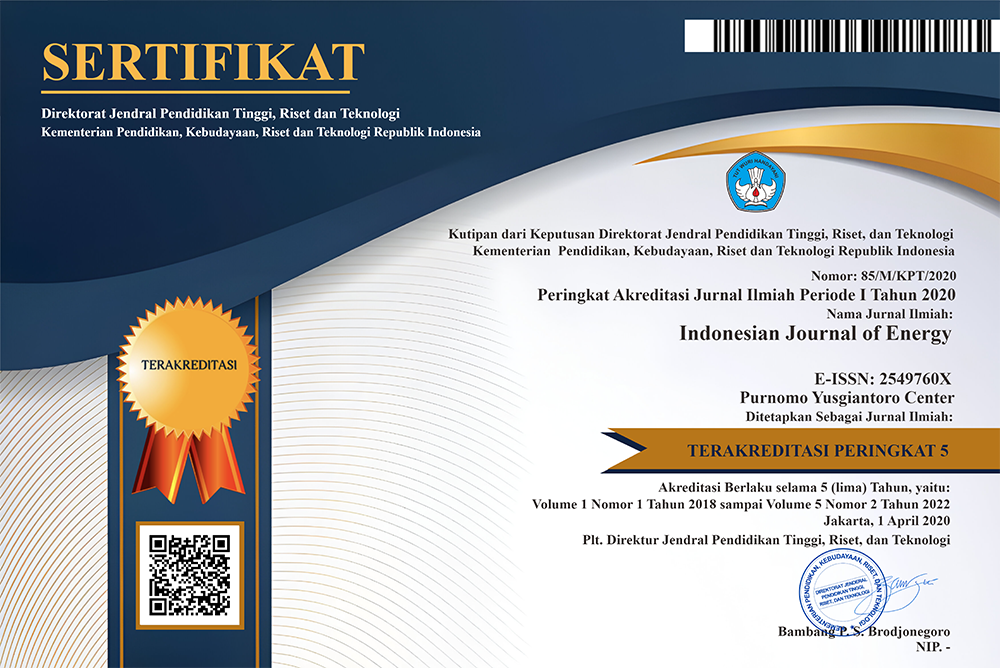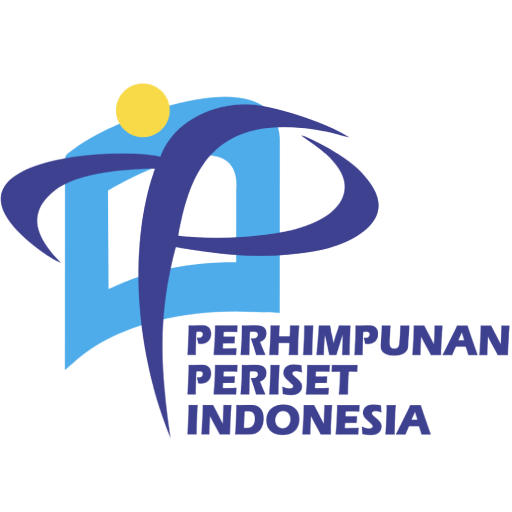Development of Carbon Based NPK Slow Release Fertilizer using Biochar from Oil Palm Empty Fruits Bunch
Abstract
Biochar is a solid material produced by thermochemical conversion of biomass under oxygen-limited conditions. It has a wide surface and contains many pores so that it can be used as a material for making fertilizer. Biochar based slow release NPK fertilizer was formulated and developed to reduce nutrient leaching and greenhouse gas emissions. In this research, biochar which was a by-product of biomass gasification using oil palm empty fruit bunches was processed to make slow release biochar NPK fertilizer. Sources of nitrogen (N) were derived from urea, phosphate (P) from diamonium phosphate (DAP) and potassium (K) derived from potassium chloride (KCl). Zeolite was added as a matrix to improve fertilizer characteristics. All materials were formulated to make slow release biochar NPK fertilizer used for red onion (Allium sepa) plant applications. Several micronutrients were also added including Mg (MgSO4 fertilizer) and S (ZA fertilizer) to support plant growth. The characterization of fertilizer products was carried out by using SEM, BET etc. to determine physical properties including surface area, pore volume, morphology and composition. Furthermore, biochar NPK fertilizer was applied to the red onion plant which was a high-value crop in Indonesia. The application of NPK biochar fertilizer on red onion plant showed its superiority compared to commercial NPK fertilizers. In addition, the use of Magnesium and sulfur micronutrients could support the growth of red onion bulbs so that they produced more and bigger bulbs.
*The paper has been selected from a collaboration with IPST and 7th ICFCHT 2019 for a conference entitled "Innovation in Polymer Science and Technology (IPST) 2019 in Conjunction with 7th International Conference on Fuel Cell and Hydrogen Technology (ICFCHT 2019) on October 16th - 19th at The Stones Hotel Legian, Bali, Indonesia"
Downloads
References
Abdullah, N., Sulaiman, F., Gerhauser, H. (2011). Characterization of Oil Palm Empty Fruit Bunches for Fuel Application, Journal of Physical Science. (Vol. 22 (1), pp. 1 – 24).
Ahmad, M., Rajapaksha, A.U., Lim, J.E., Zhang, M., Bolan, N., Mohan, D., Vithanage, M., Lee, S.S., Ok, Y.S. (2014). Biochar as a sorbent for contaminant management in soil and water: a review, Chemosphere (Vol. 99, p. 19). doi: 10.1016/j.chemosphere.2013.10.071. Epub 2013 Nov 27.
Arfiana, Finalis, E.R., Fausiah, Noor, I., Destian, E.F., Nuswantoro, D.B.I., Murti, S.D.S., Saputra, H., Noda, R. (2019). Utilization of empty fruit bunch (EFB) char in the production of NPK slow release fertilizer (SRF). AIP Conference Proceeding 2019. doi.org/10.1063/1.5098226
Cha, J.S., Park, S.H., Jung, S.C., Ryu, C., Jeon, J.K., Shin, M.C., Park, Y.K. (2016). Production and utilization of biochar: A review. Journal of Industrial and Engineering Chemistry (Vol. 40 p. 1–15).
Claoston, N., Samsuri, A.W., Husni, M.H.A., Amran, M.S.M. (2014). Effect of Pyrolysis Temperature on the Physicochemical Properties of Empty Fruit Bunch and Rice Husk Biochars, Waste Management & Research (Vol. 32 (4), pp. 331 – 339).
Coates, J. (2000). Intrepretation of Infrared Spectra, A Practical Approach, in Encyclopedia of Analytical Chemistry, edited by R. A. Meters. (John Wiley & Sons Ltd, Chichester).
Directorate General of Estate Crops. (2016). The Crop Estate Statistics of Indonesia: 2015-2017 Palm Oil. Secretariats of Directorate General of Estate Crops
Duku, M.H., Gu, S., Hagan, E.B. (2011). Biochar production potential in Ghana: A review, Renew. Sustain Energ. (Rev. 15, p. 3539-3551).
Kambo, H.S., Dutta, A. (2015). A comparative review of biochar and hydrochar in terms of production, physico-chemical properties and applications Renew. Sust. Energ. (Rev. 45 p. 359).
Konwar, L.J., Boro, J., Deka, D. (2014). Review on latest developments in biodiesel production using carbon-based catalysts, Renew. Sust. Energ. (Rev. 29, p. 546).
Lehmann, J., Joseph, S. (2009). Biochar for Environmental Management: An Introduction, Biochar for Environmental Management Science and Technology, Earthscans. (p. 1).
Liu, N., Charrua, A.B., Weng, C.H., Yuan, X., Ding, F. (2015). Characterization of biochars derived from agriculture wastes and their adsorptive removal of atrazine from aqueous solution: A comparative study, Bioresour. Technol. (Vol. 198, p.55-62). doi: 10.1016/j.biortech.2015.08.129. Epub 2015 Sep 7.
Lone, A.H., Najar, G.R., Ganie, M.A., Sofi, J.A., Tahir, A.L.I. (2015). Biochar for Sustainable Soil Health: A Review of Prospects and Concerns, Pedosphere (Vol. 25, p. 639).
Mohan, D., Sarswat, A., Ok, Y.S. (2014). Organic and inorganic contaminants removal from water with biochar, a renewable, low cost and sustainable adsorbent--a critical review, Bioresour. Technol. (Vol. 160 p.191). doi: 10.1016/j.biortech.2014.01.120. Epub 2014 Feb 8.
Ooi, C.H., Ang, C.L., Yeoh, F.Y. (2013). The Properties of Activated Carbon Fiber derived from Direct Activation from Oil Palm Empty Fruit Bunch Fiber, Advanced Materials Research (Vol. 686, pp. 109 – 117).
Rukmowati Brotodjojo, R.R., Arbiwati, D. (2017). Int'l Journal of Advances in Agricultural & Environmental Engg. (Vol.4 pp. 89).
Sari, N.A., Ishak, C.F., Bakar, R.A. (2014). American Journal of Agricultural and Biological Science (Vol. 9 (3) pp.450 – 456).
Shen, Y. (2015). Chars as carbonaceous adsorbents/catalysts for tar elimination during biomass pyrolysis or gasification. Renew. Sust. Energ. (Rev. 43, p. 281).
















